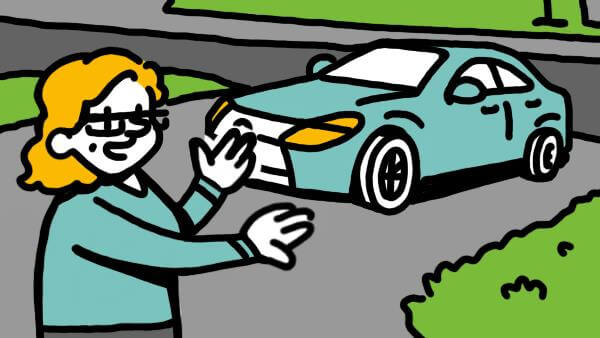Visual storytelling is a straightforward concept. Use visuals to reinforce and strengthen the message of your communications. See higher engagement with that message as well as increased retention. So how can we take this approach and use it for most organizations’ ultimate goal—increased revenue?
Here are a few ways that visual storytelling can augment your sales efforts.
Visual Storytelling Connects Emotionally
First up for discussion is the emotional affective quality of visual storytelling. Agata Krzysztofik analyzes Dove’s famous “Real Beauty Sketches” ad for its specific emotional purpose: “Make women feel better about themselves.”
It’s debatable how many people truly felt better about themselves from this ad, or how many converted to paying customers after seeing it. And that is to say nothing of the statistic that drove Dove’s goal, namely that “only 4% of women around the globe feel good about themselves.”
So, let’s leave these issues and stats at the door and marvel instead at a different number:
163 million.
That’s the views Dove’s video had amassed by late 2019. While we’ve previously argued that views are not the same as conversions or even leads, even we have to admit. This is truly impressive for an ad. It’s also the third most shared video of all time.
Try Visual Confections
Try making emotional content into a visual confection. This term, denoting “structures that consist of a multiplicity of image events that illustrate an argument, organize information, show and enforce visual comparisons… with no need for hesitation or questioning on the part of the viewer.”
Without saying the word, Mark Gibson’s invocation of this definition screams “infographic”. It is, in essence, exactly that visually-driven illustrator and organizer that should be comprehensible with minimal effort from the viewer. That last part about comprehension is vital.
A visual confection should contain carefully chosen images that reinforce and explain instead of complicating or distracting. The brain processes visuals incredibly quickly, promoting that easy intake of information that the visual confection should allow.
The wrong visuals, i.e. those that would encumber or confuse the message, will be taken in just as quickly. The solution? When creating an infographic or other visual confection, be prepared: do your audience research and make sure that you’ve chosen just the right images to transmit your message quickly and clearly to your audience.
Show Value with a Visual Story
Another fantastic way to use visual storytelling to improve sales is to tell a visual story that expresses the value of your product or service. Crucially, this does not mean an explainer or how-to video. Focus very hard on the “storytelling” part of visual storytelling for this type of promotion.
By that, we mean to write a story (and accompany it with images) that focuses on a relatable character and their experience with the brand. Don’t write a story in which your product is the “star” and all language is just praise for that product. That kind of writing is barely storytelling, and will not stir any emotional reaction in your audience.
Instead, write about real people, and use their images in the visuals of your story. People are naturally drawn to human forms. Take advantage of this tendency and keep their engagement by keeping your visual story human-focused. Tell the story of how Deborah loves your new model of car, not how the car boasts several unique features. Show customers a visual story where they can see themselves (and the solutions they need) represented, not the story of why you think they should buy.
Build a Story Around Conflict
Megan Totka takes the use of storytelling a step further than simply focusing on relatable human characters/forms. She suggests that you build your story around conflict. Classic narratives in almost every culture are structured between the clash of a hero with a threat. So mirror this timeless scenario with your visual story.
Totka lays out the classic narrative stages of Introduction, Rising Action, Climax, Falling Action, and Resolution as a roadmap for your visual story. Simply fold your narrative into these stages.
Your Introduction lets the viewer meet your main character.
During Rising Action, show the pain point that is making life difficult for your main character.
Then, in the Climax, it’s time for the victory of your product over your character’s problem.
Falling Action lets you further elaborate on how your character benefits from you product.
Resolution will include your final thoughts and call to action.
Humans are pattern-seeking creatures who are predisposed to consume stories. So patterning your visual storytelling after this well-established model will make your narrative both relatable and engaging.
Once we’re cued into a pattern’s beginning, we want to see it through to the end. Show your viewer the beginning of a classic story archetype, and they’ll likely want to watch your visual story to its end—increasing the likelihood that they’ll watch your call to action.
Connect to Convert
Through emotion, quickly digested visual confections, the right visuals and narrative to show your product/service’s value, and a classical narrative structure, you’ll see more engagement with your brand and higher sales numbers.
Our brains love stories. Visualizing helps us retain those stories even better than when they are just spoken or written. Give your audience great visuals and a recognizable structure, and they’ll be with you to that all-important call to action. Conversions—and customer retention—will follow.
How does your organization utilize visual storytelling? Have you found a particular approach beneficial to your sales efforts? How might you get started incorporating visual storytelling into your sales cycle?

